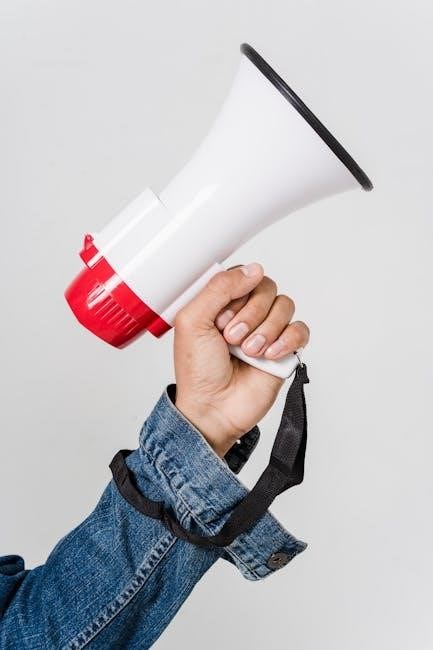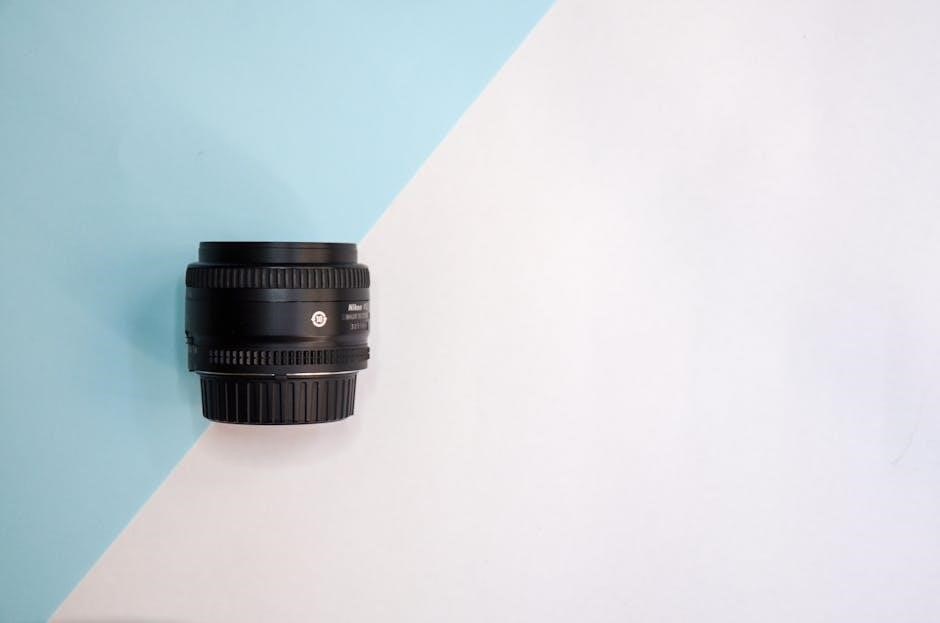Manual propelling devices have a crucial feature of providing propulsion using human power to navigate vessels safely and efficiently in various water conditions always successfully․
Definition of Manual Propelling Device
A manual propelling device is defined as a set of oars, paddles or another device that uses human power to propel a vessel, including a rudder on a small sail boat or a paddle wheel on a paddle boat, anything that a person can operate by hand or foot to propel a boat, providing a manual means of propelling the boat if the engine quits, and it is required on all boats up to 9 metres to ensure safe navigation, a manual propelling device is a crucial piece of equipment for any vessel, and its definition is important for understanding its role in vessel operation and safety․

Types of Manual Propelling Devices
Manual propelling devices include oars and paddles and other devices always․
Examples of Manual Propelling Devices
Examples of manual propelling devices include a set of oars, a paddle, or a rudder on a small sailboat․ These devices are used to propel a vessel through the water using human power․ A paddle wheel on a paddleboat is also considered a manual propelling device․ Other examples include a canoe paddle or a kayak paddle․ These devices are designed to be used by hand or foot to propel a vessel․ They are an essential safety feature on many types of boats, especially those that are propelled by a single engine․ In the event of engine failure, a manual propelling device can be used to navigate the vessel back to shore or to a safe location․ Manual propelling devices are a crucial piece of safety equipment․

Importance of Manual Propelling Devices
Manual propelling devices are essential for safe navigation and emergency situations always requiring human power and skill to operate correctly and efficiently always․
Emergency Situations
In emergency situations, manual propelling devices play a critical role in ensuring the safety of passengers and crew․ These devices can be used to propel a vessel to shore or to a safe location in the event of engine failure or other emergencies․ The ability to operate manually is a key feature of these devices, allowing individuals to navigate through calm or rough waters․ According to regulations, certain pleasure craft are required to carry a manual propelling device or an anchor on board, which can be used in emergency situations to prevent accidents and ensure a safe outcome․ Manual propelling devices are an essential component of vessel safety equipment․ They provide a reliable means of propulsion in emergency situations, helping to prevent accidents and save lives․

Regulations Regarding Manual Propelling Devices
Regulations require certain vessels to carry manual propelling devices for safety purposes always and under specific conditions successfully every time with ease․
Small Vessel Regulations
The Small Vessel Regulations require pleasure craft to carry a manual propelling device or an anchor on board, which is a crucial feature for safety purposes․
This regulation applies to vessels up to 9 metres in length, including personal watercraft, and is intended to provide a means of propulsion in case of engine failure․
The manual propelling device can be a set of oars, a paddle, or any other device that can be operated by hand or foot to propel the vessel․
The regulation is in place to ensure that vessel operators have a means of safely returning to shore in the event of an emergency․
By carrying a manual propelling device, vessel operators can help prevent accidents and ensure a safe and enjoyable experience on the water․
Features of Manual Propelling Devices
Manual propelling devices have portable and lightweight features always included in their design successfully․
Key Characteristics
Manual propelling devices have distinct key characteristics that make them essential for navigation․ These devices are typically portable and lightweight, making them easy to store and transport on vessels․ The key characteristics of manual propelling devices also include their ability to provide propulsion using human power, allowing users to navigate through calm or rough waters․ Additionally, manual propelling devices are often designed with durability and reliability in mind, ensuring that they can withstand various water conditions and last for a long time․ Overall, the key characteristics of manual propelling devices make them a crucial component of vessel safety and navigation equipment, providing users with a reliable means of propulsion in emergency situations, as stated in the Small Vessel Regulations, which require certain pleasure craft to carry on board a manual propelling device or an anchor, and these characteristics are essential for safe navigation․

Selection of Manual Propelling Devices
Choosing a manual propelling device requires considering vessel size and type always carefully and successfully every time for safety․
Choosing the Right Device
To choose the right manual propelling device, consider the size and type of vessel, as well as the number of people on board․
A device that is easy to use and maneuver is essential for safe and efficient navigation․
The device should also be durable and able to withstand various water conditions․
Additionally, consider the storage space available on the vessel for the device․
It is also important to consider the weight and balance of the device to ensure it can be easily handled․
A manual propelling device that meets these criteria can provide a reliable means of propulsion in case of engine failure․
By selecting the right device, vessel owners can ensure a safe and enjoyable experience on the water․
Overall, choosing the right manual propelling device requires careful consideration of several factors․
Maintenance of Manual Propelling Devices
Regular inspection and cleaning of manual propelling devices ensure optimal performance always and efficiently every time with proper handling and storage methods used․
Pre-Trip Checks
Pre-trip checks are essential for ensuring the manual propelling device is in good working condition․ The device should be inspected for any damage or wear and tear․ This includes checking the oars, paddles, or other components for any cracks or breaks; The device should also be checked for proper storage and handling to prevent any damage during transportation․ Additionally, the device should be easily accessible in case of an emergency․ By performing these pre-trip checks, boaters can ensure their safety and the safety of their passengers․ Regular checks can also help extend the lifespan of the manual propelling device․ Proper maintenance and inspection can help prevent any malfunctions or failures during use․ This is crucial for a safe and enjoyable boating experience․
